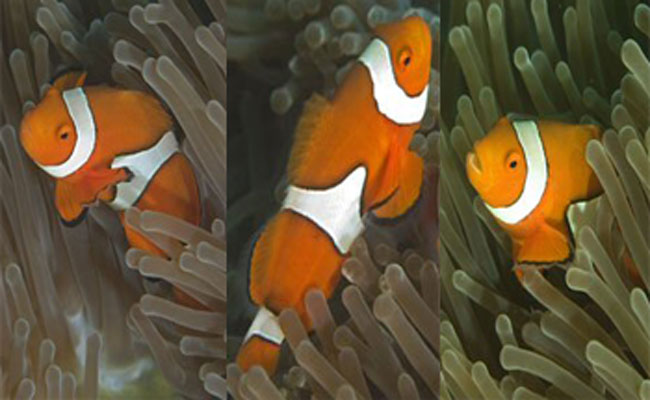Scientists Learn How Nemo Finds His Way Home

How does the orange clownfish — aka Nemo from the movie "Finding Nemo" — really find its way home?
It turns out the colorful saltwater fish can sniff for leaves that fall into the sea from rainforests growing on the islands near their coral reef homes.
After clownfish hatch from their eggs, they spend 10 to 12 days in the open sea, likely carried out by prevailing currents. But they then often return to the near-shore reefs where they were born. How these young fish know where to swim back to has been a mystery.
To find out, scientists investigated coral reefs surrounding offshore islands in Papua New Guinea in the southwestern Pacific Ocean. There, orange clownfish (Amphiprion percula) and the sea anemones they inhabit are especially abundant in shallow water beneath overhanging rainforest vegetation.
The researchers dove down to gather young clownfish that had recently returned to the reefs.
"The clownfish like to protect their anemones, so if you startle the anemones, the clownfish come right out, and you can really get them quickly," said researcher Danielle Dixson, a marine biologist at James Cook University in Townsville, Australia.
The fish were then brought to a lab on a boat and tested with streams of seawater containing different scents — say, from a bucket holding a sea anemone or leaves from island rainforests. The clownfish strongly preferred swimming toward flows scented with leaves and sea anemones compared to other scents.
Sign up for the Live Science daily newsletter now
Get the world’s most fascinating discoveries delivered straight to your inbox.
"No one ever predicted that clownfish would be attracted to the scent of leaves. I just figured they might like beach water." Dixson said. "I saw the islands had heavy vegetation, and I said, 'Let's give it a shot.'"
The scientists also tested clownfish that were born and raised in an aquarium, and had never lived on the reefs or the open sea. These were strongly attracted to the scents of leaves and anemones as well, suggesting these preferences are innate.
"This shows that you can't separate the marine and terrestrial environments — you have to consider them working together," Dixson said. "I would really like to see if this is happening in other fish."
These new findings also suggest "that you can't protect reefs without protecting the surface," Dixson said. "It's really easy to speculate that without the leaves, clownfish might not be able to find their homes."
It remains to be seen just how far out clownfish can detect the scent of rainforests. "Off any island, there'll be eddies and currents that pull leaves out a fair ways from islands," Dixson said.
The scientists detailed their findings online Aug. 27 in the journal Proceedings of the Royal Society B.
- Image Gallery – Under the Sea: Life In the Sanctuaries
- Image Gallery – Colorful Creations: Incredible Coral
- Report: U.S. Coral Reefs In Severe Decline










